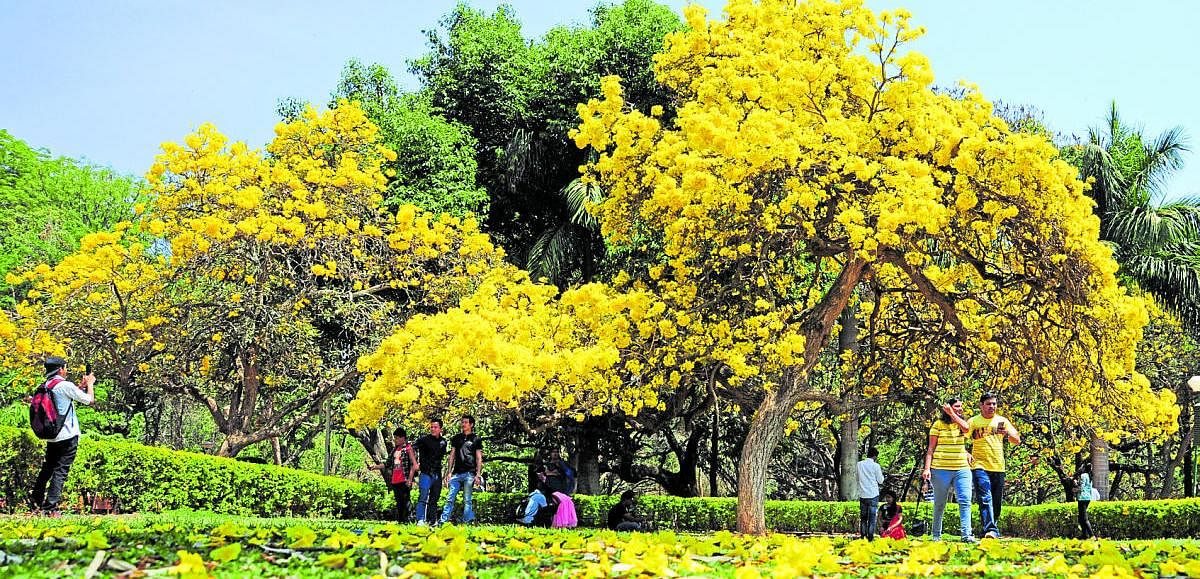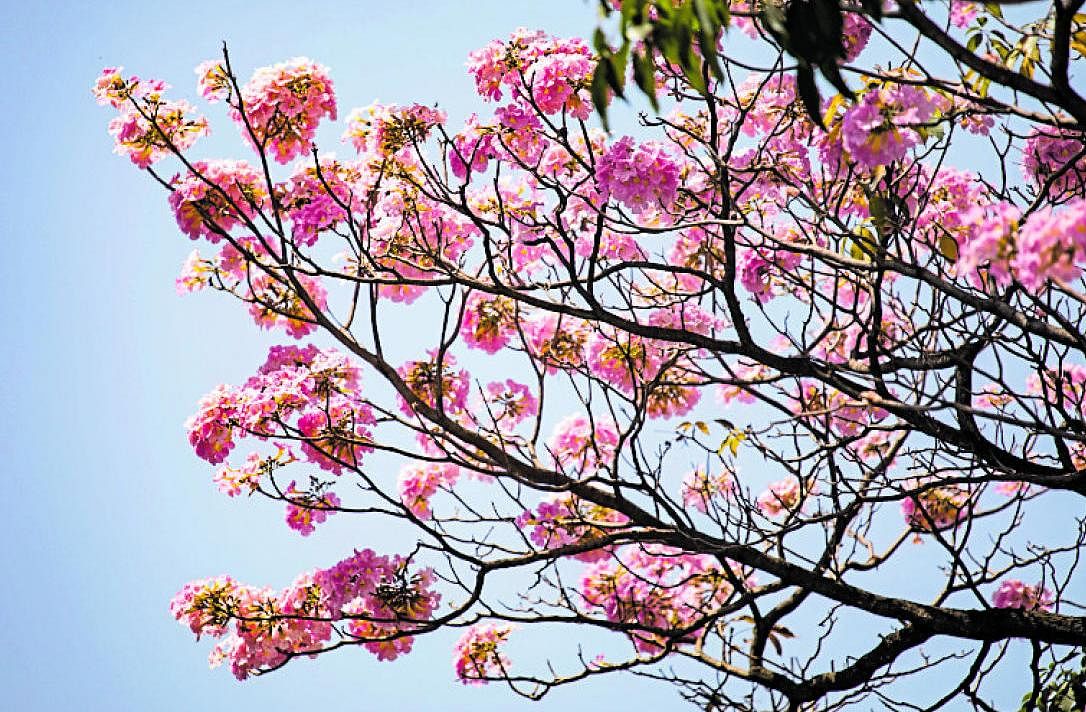

One can’t imagine Bengaluru without the backdrop of its rich greenery — an overwhelming scene that showers respite from the traffic-infested engine that the city has now become. This vivid, aesthetic imagery comes alive just before the summer dawns, when the landscape is covered with pinks, yellows and purples doting the green leaves, illuminated by the summer sun.
A few days into blooming, while the honey bees pick on the best ones, the older flowers of Tabebuias fall and form an exquisite carpet.
Bengaluru’s roots with Tabebuias and other ornamental avenue trees started after German botanist and gardener Gustav Hermann Krumbiegel added his magic touch to the bio-aesthetics of the Kingdom of Mysore.
Retired additional director of horticulture Dr S V Hittalmani says the ornamental beauties were introduced to Bengaluru by the early pioneers of Lal Bagh including Krumbiegel.
He introduced several of Tabebuias, which are native to tropical America, to the city between 1908 and 1930, says Hittalmani, and since both the regions have similar climatic conditions, these plants have adapted well here.
“Tabebuias flower over a period. The earliest to flower is T argentea (golden trumpet) in January and early February, and continues till early March. This is overlapped or followed by T rosea, which are in bloom right now in Bengaluru,” he says.
Tree-bound fun
Thejaswi Udupa, a hardcore Bengalorean, says that some credit should also go to City Improvement Trust Board first, and then Bangalore Development Authority later for continuing to use the trees in all the new layouts that they have planned and developed.
“The sight of these trees in bloom is one of those things that defines Bengaluru as much as its pleasant weather does. In fact, the lack of these trees in some of the newer parts of the town is what makes those parts so unlike Bengaluru to me, and not as one might assume, the preponderance of non-local tongues,” he says.
Thejaswi talks about the old Bengaluru where trees and their flowers were a big part of children’s games.
“The road near the place where I grew up had a lot of badminton-ball trees (Parkia biglandulosa), and its flowering would coincide with summer vacations at school. The flowers often became ball substitutes for various dodgeball-type games. And the seedpods had a certain mealy flour in them, which in turn would get moulded with water as some form of a craft. Similarly, the gum in rain tree’s pods often was moulded into cork balls.”
As the city has grown leaps and bounds, the old charm is still protected in its heart, as ace writer Sandhyarani, who has seen Bengaluru’s transformation over the years, remembers: “I came to Bengaluru in 1990. At the time, the stretch from Southend circle to Rajalakshmi choultry was lined with trees. It would feel as if one is inside a farm. Over the years, the trees have been axed for various reasons. We are living in a dilemma: we want developments, but we want to retain the trees.”
She recommends an early-morning stroll around Jayanagar Complex to soak in the freshness that the trees and flowers have to offer.
“You can see a carpet of flowers in the morning. It reminds me of the Kannada song Nee Nadeyuva Haadiyalli... I feel like removing my shoes and walking barefoot over this carpet. I believe it’s not we who are safeguarding the trees, but the trees that are safeguarding us.”
Talking about the little ones who call these flowers pipi hoova, which produce sound when blown through, Sandhyarani adds, “These trees not only inspire art but life, too. Though they are not Indian, it’s the beauty of our culture that we have made them our own. Just looking at them makes us happy.”
Baldeep Kaur, Founder of Inspiring Evolution, seconds Sandhyarani in saying that flowering trees and green environments support relaxation and reduce stress.
“Our closeness to the environment is genetic and deep-seated in human evolution. Looking at trees, plants and flowers encourages living in the present and engages the senses. When you take time to smell the sweet perfume of a magnolia tree, the level of stress-inducing hormones drop,” says Kaur, who is a positive psychology coach.
According to various researches in Positive Psychology, there is already evidence that exposure to nature can increase vitality and positive emotional state. But more than that, being around greenery has shown to increase life satisfaction, adds Kaur. Kaur believes it’s imperative to bring nature in any possible form into our home, workspace and community.
“The easiest way to do that is to plant more trees, and it’s great that people have realised the benefits of trees. There are so many initiatives in our city to take it back to its green-glory days,” she says.
Watch out for these
Surprises await us, as Dr Hittalmani says a lot of trees will begin to flower as spring is the main flowering season now: the Tabebuias will be followed by jacarandas, acacias, crape-myrtle, sacred tree and gulmohars, which come in April-May.